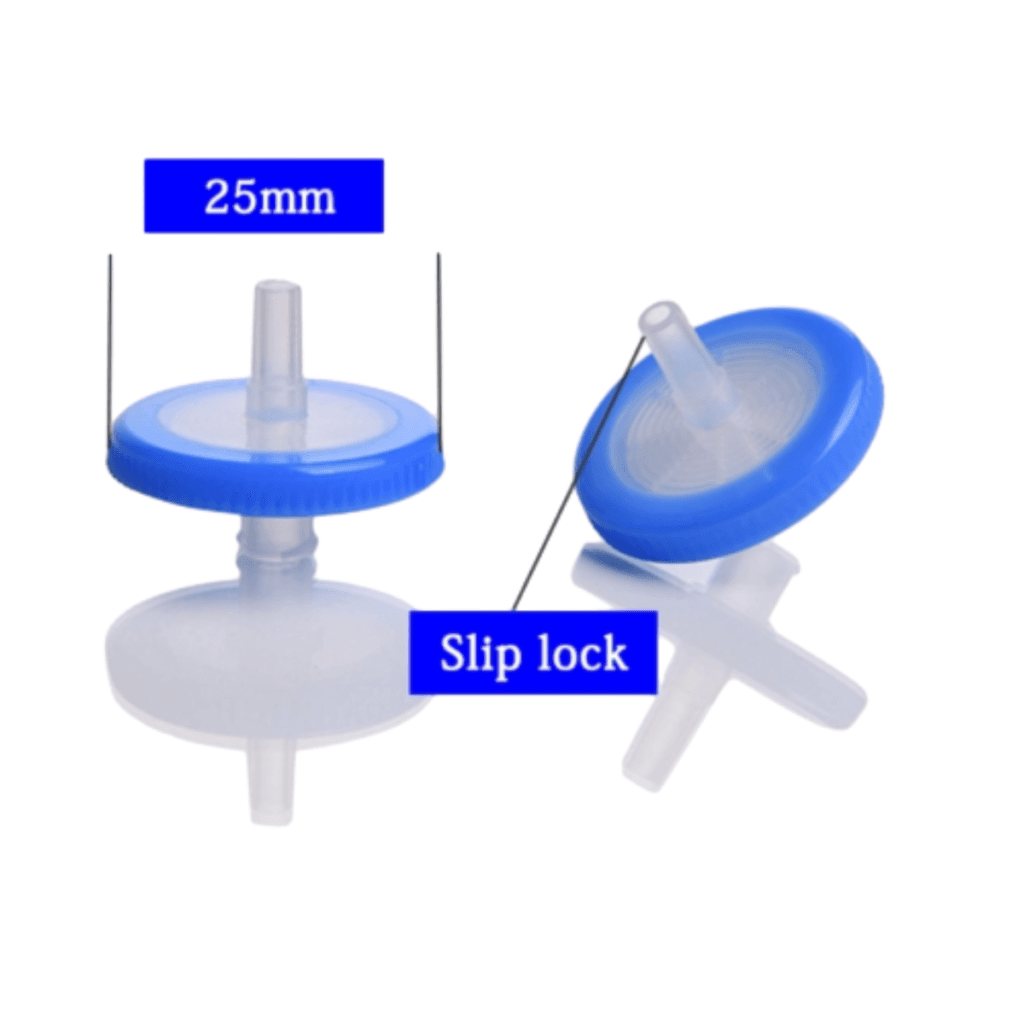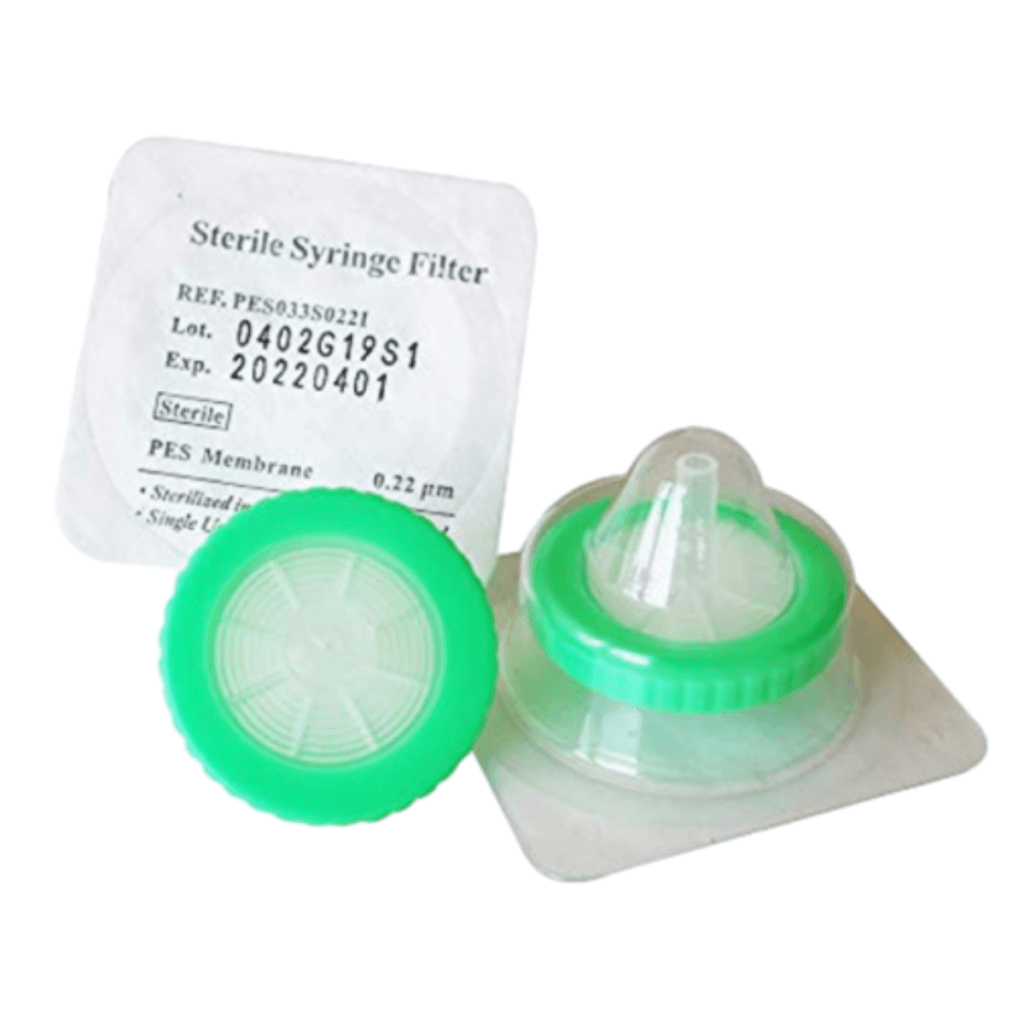Our ZX VIALSUPPLIES provide a simple and clear guide to peptide filtering using a syringe filter, commonly used in laboratory and peptide synthesis settings:
🧪 Easy Guide to Peptide Filtering with a Syringe Filterition
🔧 Materials Needed:
- Dissolved peptide solution (in water, acetonitrile, or other suitable solvent)
- Disposable syringe (1 mL to 10 mL, depending on volume)
- Syringe filter (typically 0.22 µm or 0.45 µm pore size; PTFE, PVDF, or Nylon depending on solvent compatibility)
- Clean collection vial or container

✅ Step-by-Step Instructions:
Dissolve the Peptide
- Ensure your peptide is fully dissolved in the appropriate solvent. Use gentle vortexing or sonication if needed.
Choose the Right Filter
- 0.22 µm filter: For sterile filtration or finer particulates.
- 0.45 µm filter: For general clarification.
- Choose PTFE or PVDF filters for organic solvents; Nylon or PES for aqueous solutions.

Draw the Solution
- Pull the peptide solution into the syringe slowly to avoid bubbles.
Attach the Syringe Filters
- Firmly attach the filter to the syringe tip. Twist gently to secure (luer-lock or slip-tip connection).
Filter the Solution
- Hold the syringe upright and gently push the plunger to start filtering.
- Use slow, steady pressure to prevent the filter from clogging or bursting.
Collect the Filtrate
- Filter the solution directly into a clean vial or container for storage or further use.
Dispose of Filter and Syringe
- Discard the used filter and syringe as per lab safety protocols.